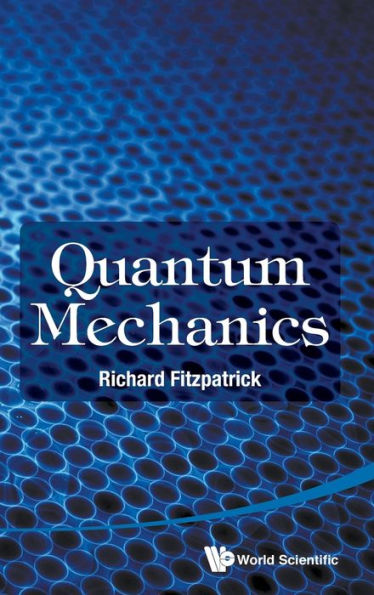Table of Contents
Preface v
1 Fundamental Concepts 1
1.1 Breakdown of Classical Physics 1
1.2 Photon Polarization 2
1.3 Fundamental Principles of Quantum Mechanics 4
1.4 Ket Space 5
1.5 Bra Space 8
1.6 Operators 11
1.7 Outer Product 13
1.8 Eigenvalues and Eigenvectors 13
1.9 Observables 15
1.10 Measurements 17
1.11 Expectation Values 18
1.12 Degeneracy 19
1.13 Compatible Observables 19
1.14 Uncertainty Relation 21
1.15 Continuous Spectra 23
1.16 Exercises 24
2 Position and Momentum 29
2.1 Introduction 29
2.2 Poisson Brackets 29
2.3 Wavefunctions 33
2.4 Schrödinger Representation 35
2.5 Generalized Schrödinger Representation 38
2.6 Momentum Representation 40
2.7 Heisenberg Uncertainty Principle 42
2.8 Displacement Operators 43
2.9 Exercises 47
3 Quantum Dynamics 51
3.1 Introduction 51
3.2 Schrödinger Equation of Motion 51
3.3 Heisenberg Equation of Motion 54
3.4 Ehrenfest Theorem 57
3.5 Schrödinger Wave Equation 59
3.6 Charged Particle Motion in Electromagnetic Fields 63
3.7 Gauge Transformations in Electromagnetism 65
3.8 Flux Quantization and the Aharonov-Bohm Effect 66
3.9 Exercises 68
4 Orbital Angular Momentum 75
4.1 Orbital Angular Momentum 75
4.2 Eigenvalues of Orbital Angular Momentum 78
4.3 Rotation Operators 82
4.4 Eigenfunctions of Orbital Angular Momentum 84
4.5 Motion in Central Field 87
4.6 Energy Levels of Hydrogen Atom 89
4.7 Exercises 92
5 Spin Angular Momentum 97
5.1 Introduction 97
5.2 Properties of Spin Angular Momentum 97
5.3 Wavefunction of Spin One-Half Particle 99
5.4 Rotation Operators in Spin Space 100
5.5 Magnetic Moments 103
5.6 Spin Precession 104
5.7 Pauli Two-Component Formalism 106
5.8 Spinor Rotation Matrices 110
5.9 Factorization of Spinor-Wavefunctions 111
5.10 Spin Greater Than One-Half Systems 113
5.11 Exercises 115
6 Addition of Angular Momentum 119
6.1 Introduction 119
6.2 Commutation Rules 119
6.3 Clebsch-Gordon Coefficients 121
6.4 Calculation of Clebsch-Gordon Coefficients 124
6.5 Exercises 128
7 Time-Independent Perturbation Theory 131
7.1 Introduction 131
7.2 Two-State System 132
7.3 Non-Degenerate Perturbation Theory 133
7.4 Quadratic Stark Effect 135
7.5 Degenerate Perturbation Theory 139
7.6 Linear Stark Effect 142
7.7 Fine Structure 143
7.8 Zeeman Effect 149
7.9 Hyperfine Structure 153
7.10 Exercises 157
8 Time-Dependent Perturbation Theory 165
8.1 Introduction 165
8.2 General Analysis 165
8.3 Two-State System 167
8.4 Nuclear Magnetic Resonance 169
8.5 Dyson Series 171
8.6 Sudden Perturbations 174
8.7 Energy-Shifts and Decay-Widths 177
8.8 Harmonic Perturbations 181
8.9 Absorption and Stimulated Emission of Radiation 183
8.10 Spontaneous Emission of Radiation 187
8.11 Electric Dipole Transitions 189
8.12 Forbidden Transitions 192
8.13 Magnetic Dipole Transitions 193
8.14 Electric Quadrupole Transitions 196
8.15 Photo-Ionization 197
8.16 Exercises 202
9 Identical Particles 213
9.1 Introduction 213
9.2 Permutation Symmetry 213
9.3 Spin Statistics Theorem 217
9.4 Two-Electron System 218
9.5 Helium Atom 220
9.6 Orthohelium and Parahelium 222
9.7 Variational Principle 223
9.8 Hydrogen Molecule Ion 227
9.9 Exercises 233
10 Scattering Theory 241
10.1 Introduction 241
10.2 Fundamental Equations 241
10.3 Born Approximation 245
10.4 Born Expansion 247
10.5 Partial Waves 248
10.6 Optical Theorem 253
10.7 Determination of Phase-Shifts 254
10.8 Hard-Sphere Scattering 255
10.9 Low-Energy Scattering 257
10.10 Resonant Scattering 259
10.11 Elastic and Inelastic Scattering 261
10.12 Scattering of Identical Particles 264
10.13 Exercises 266
11 Relativistic Electron Theory 271
11.1 Introduction 271
11.2 Preliminary Analysis 271
11.3 Dirac Equation 273
11.4 Lorentz Invariance of Dirac Equation 278
11.5 Free Electron Motion 281
11.6 Electron Spin 283
11.7 Motion in Central Field 286
11.8 Fine Structure of Hydrogen Energy Levels 290
11.9 Positron Theory 293
11.10 Exercises 294
Appendix A Physical Constants 297
Appendix B Solutions to Exercises 299
B.1 Chapter 1 299
B.2 Chapter 2 309
B.3 Chapter 3 318
B.4 Chapter 4 334
B.5 Chapter 5 352
B.6 Chapter 6 363
B.7 Chapter 7 370
B.8 Chapter 8 387
B.9 Chapter 9 415
B.10 Chapter 10 435
B.11 Chapter 11 449
Bibliography 461
Index 467



